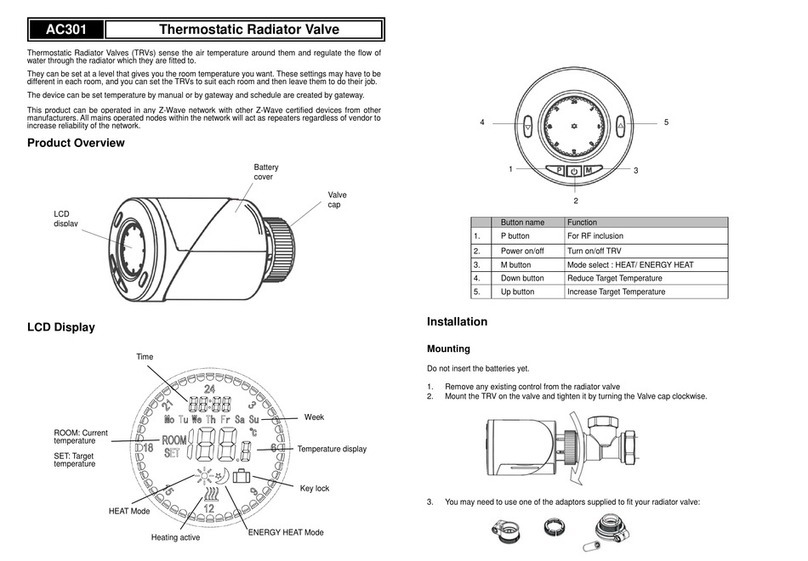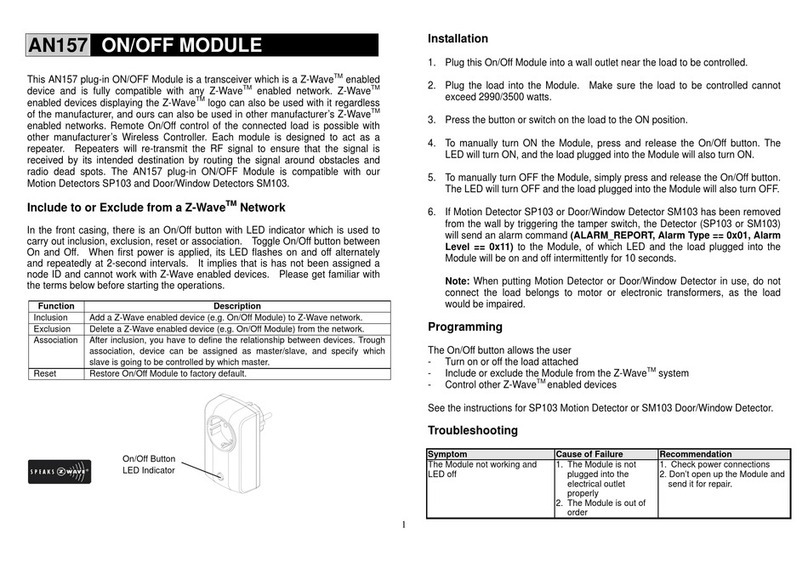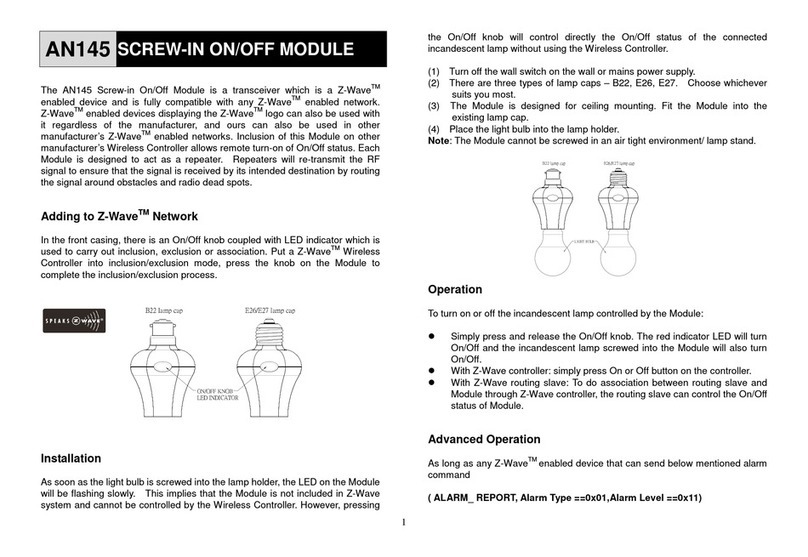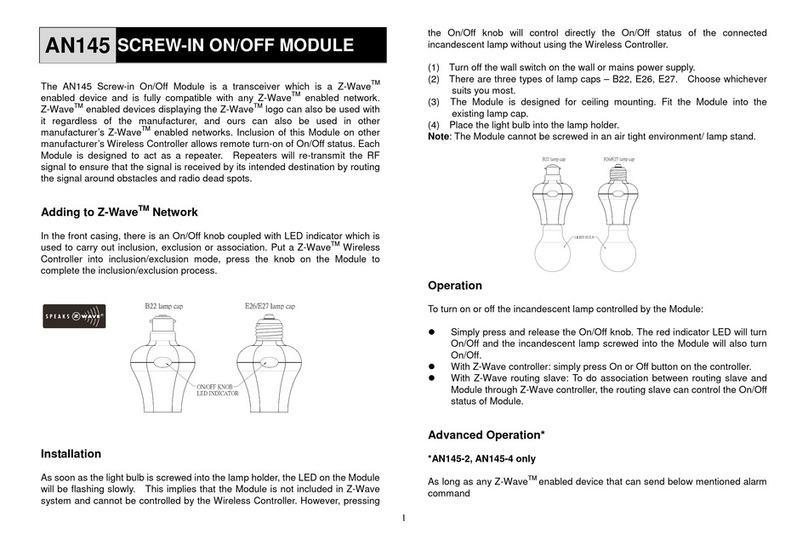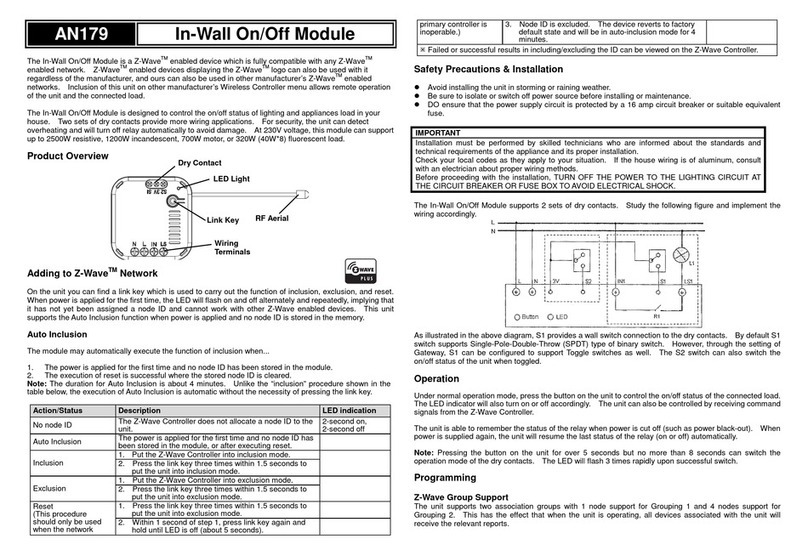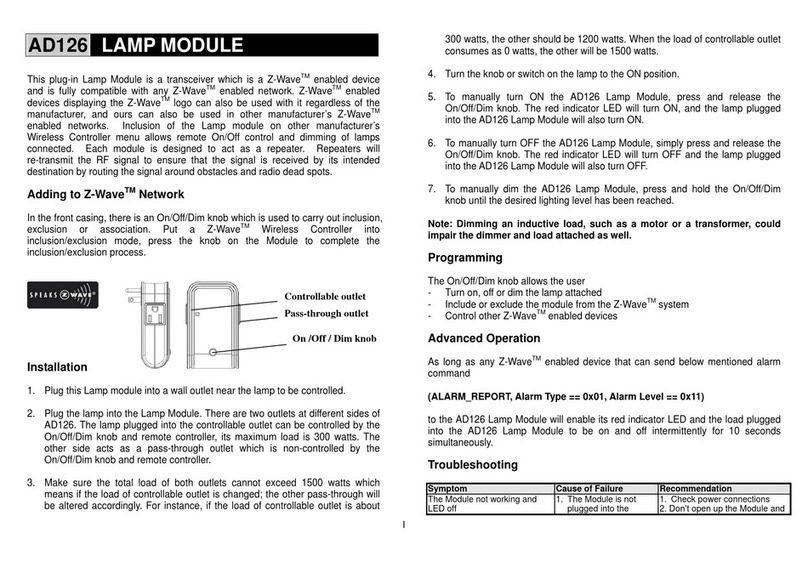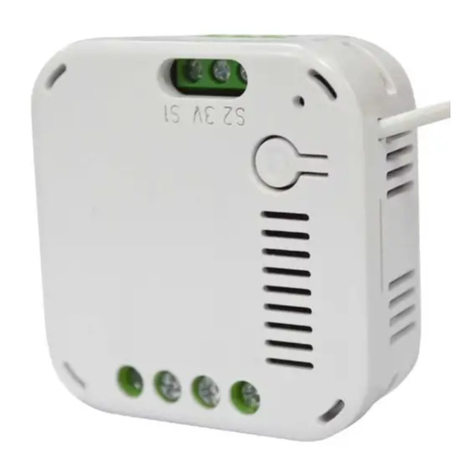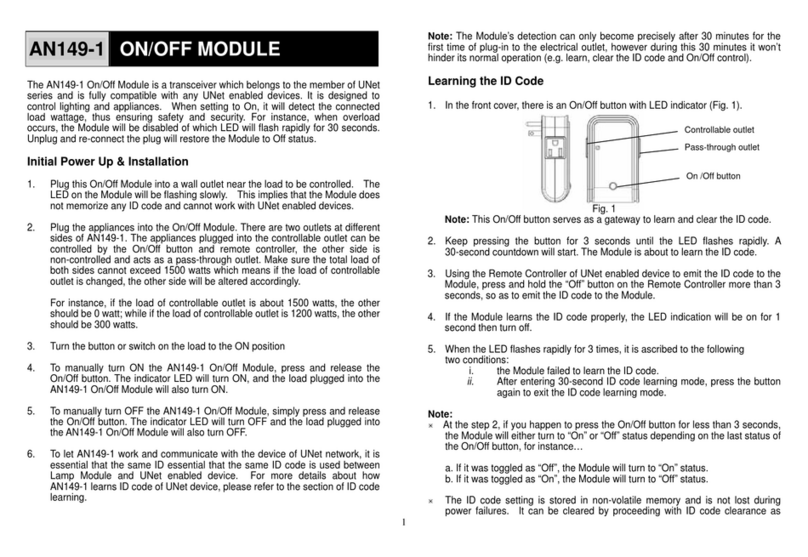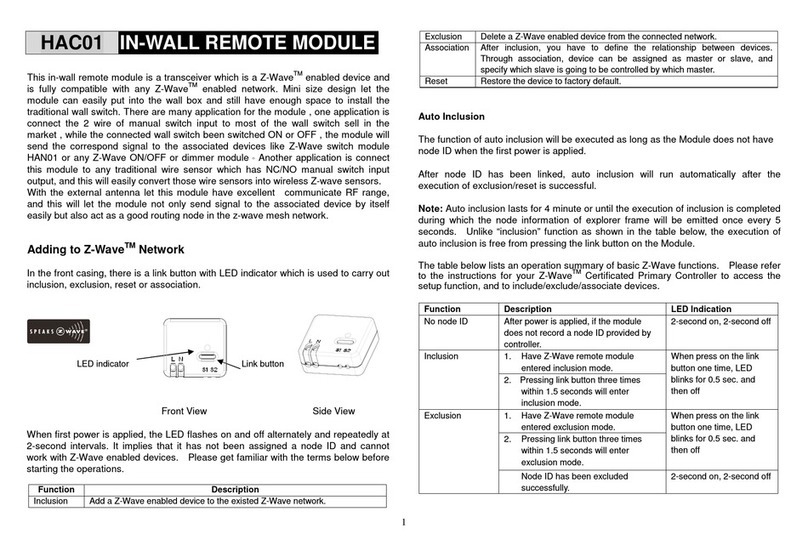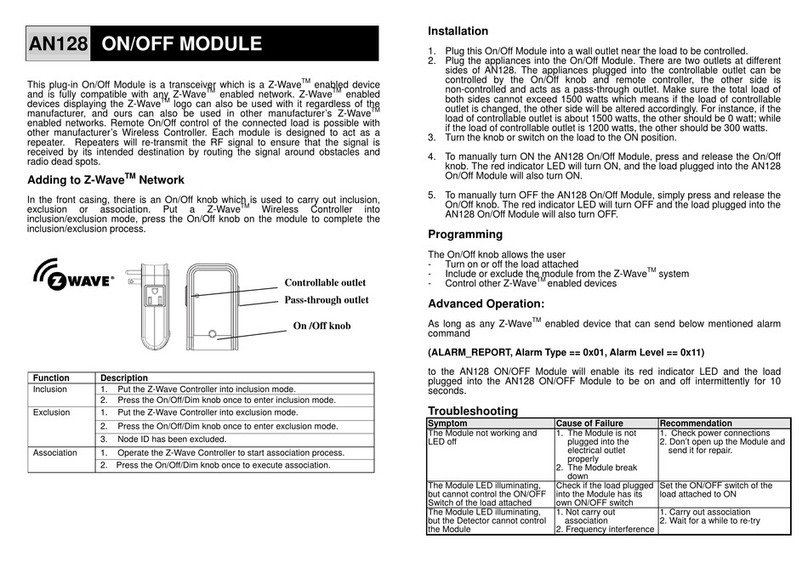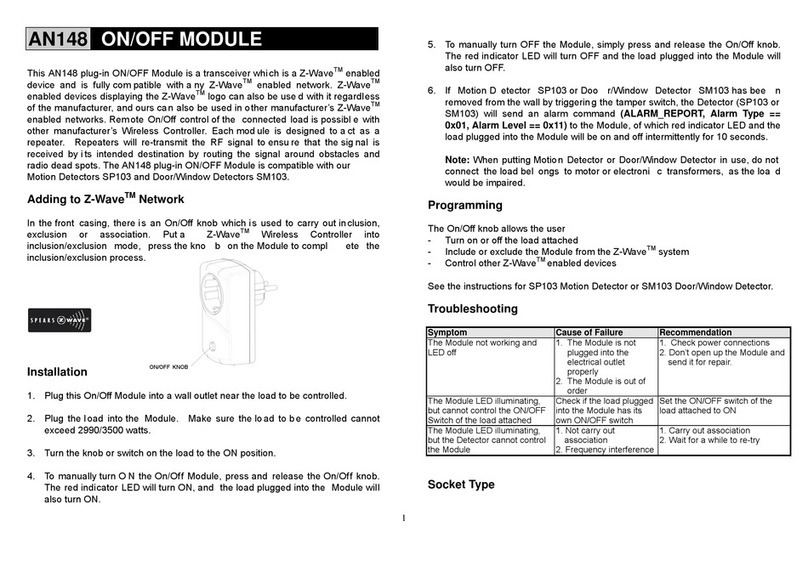1
On/Off/Dim button
AD132-1 LAMP MODULE
Controllable outlet
Pass-through outlet
The AD132-1 Lamp Module is a transceiver which belongs to the member of UNet
series and is fully compatible with any UNet enabled devices. It is designed to
control the On/Off status and brightness level of incandescent lamp connected to
the lamp module. When setting to On, it will detect the connected load wattage,
thus ensuring safety and security. For instance, when overload occurs, the Lamp
Module will be disabled of which LED will flash rapidly for 30 seconds. Unplug
and re-connect the plug will restore the Lamp Module to Off status.
Initial Power Up & Installation
1. Plug this Lamp Module into a wall outlet near the load to be controlled. The
LED on the Module will be flashing slowly. This implies that the Module
does not memorize any ID code and cannot work with UNet enabled devices.
2. Plug the appliances into the Lamp Module. There are two outlets at different
sides of AD132-1. The appliances plugged into the controllable outlet can be
controlled by the On/Off button and remote controller, the other side is
non-controlled and acts as a pass-through outlet. Make sure the total load of
both sides cannot exceed 1500 watts which means if the load of controllable
outlet is changed, the other side will be altered accordingly.
For instance, if the load of controllable outlet is about 1500 watts, the other
should be 0 watt; while if the load of controllable outlet is 1200 watts, the
other should be 300 watts.
3. Turn the button or switch on the load to the ON position
4. To manually turn ON the AD132-1 Lamp Module, press and release the
On/Off button. The indicator LED will turn ON, and the load plugged into the
AD132-1 Lamp Module will also turn ON.
5. To manually turn OFF the AD132-1 Lamp Module, simply press and release
the On/Off button. The indicator LED will turn OFF and the load plugged into
the AD132-1 Lamp Module will also turn OFF.
6. To let AD132-1 work and communicate with the device of UNet network, it is
essential that the same ID essential that the same ID code is used between
Lamp Module and UNet enabled device. For more details about how
AD132-1 learns ID code of UNet device, please refer to the section of ID
code learning.
Note: The Module’s detection can only become precisely after 30 minutes for the
first time of plug-in to the electrical outlet, however during this 30 minutes it won’t
hinder its normal operation (e.g. learn, clear the ID code and On/Off control).
Learning the ID Code
1. In the front cover, there is an On/Off/Dim button with LED indicator (Fig. 1).
Fig. 1
Note: This On/Off/Dim button serves as a gateway to learn and clear the ID
code.
2. Keep pressing the button for 3 seconds until the LED flashes rapidly. A
30-second countdown will start. The Module is about to learn the ID code.
3. Using UNet enabled device to emit the ID code to the Module. Press and
hold the “learning” button of UNet device more than 3 seconds, so as to emit
the ID code to the Module.
4. If the Module learns the ID code properly, the LED indication will be on for 1
second then turn off.
5. When the LED flashes rapidly for 3 times, it is ascribed to the following two
conditions:
i. The Module failed to learn the ID code.
ii. After entering 30-second ID code learning mode, press the button
again to exit the ID code learning mode.
Note:
ÚAt the step 2, if you happen to press the On/Off/Dim button for less than 3
seconds, the Module will turn to “On” status (LED lights on steadily). To
re-enter the ID code learning mode, simply press the On/Off/Dim button to turn
off the Module (LED lights off), and then repeat the above step 2-5 to complete
ID code learning procedure.
ÚThe ID code setting is stored in non-volatile memory and is not lost during
power failures. It can be cleared by proceeding with ID code clearance as
indicated below in ID code clearing section.
ÚThe module can learn only one set of ID code.
